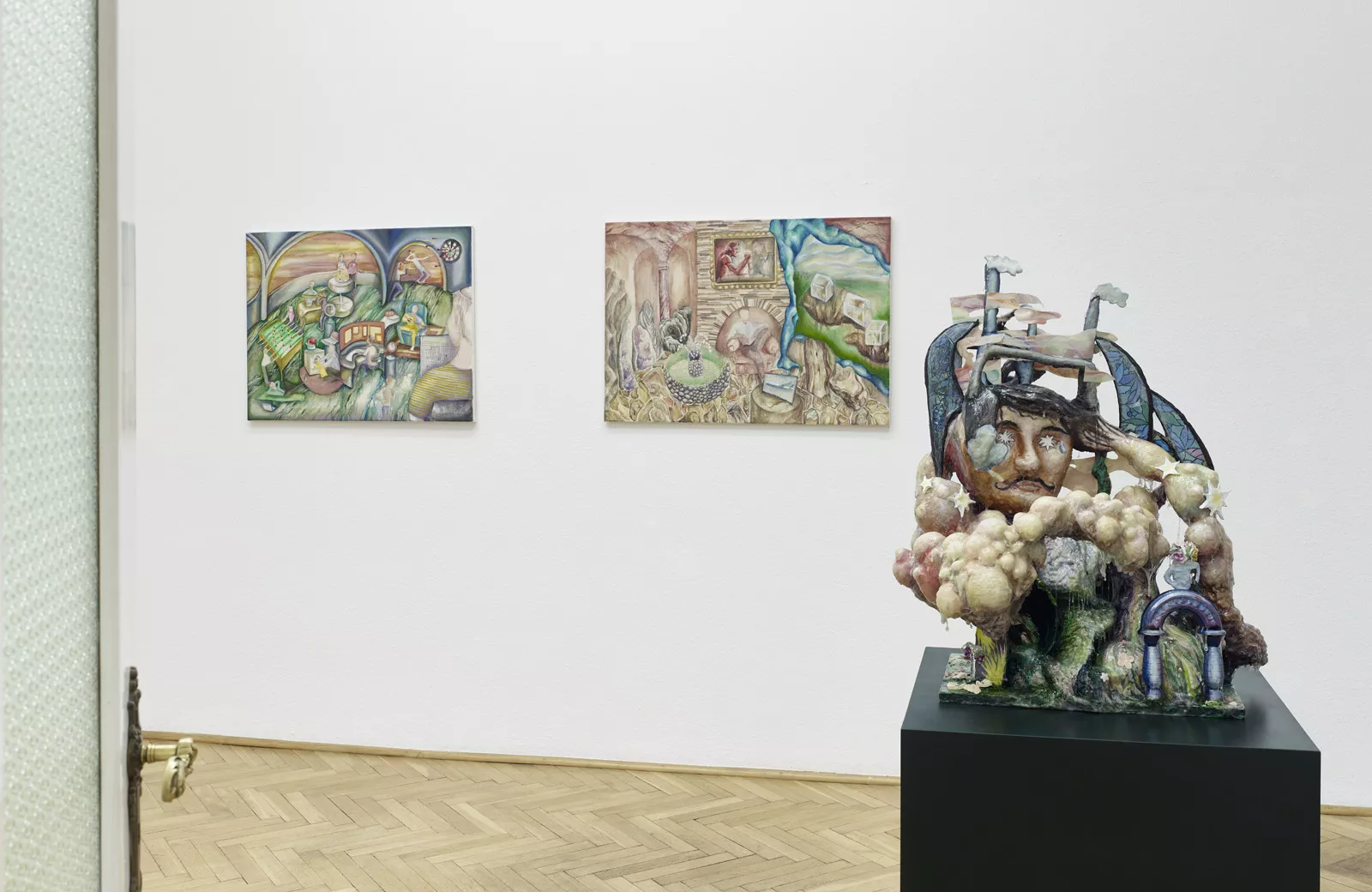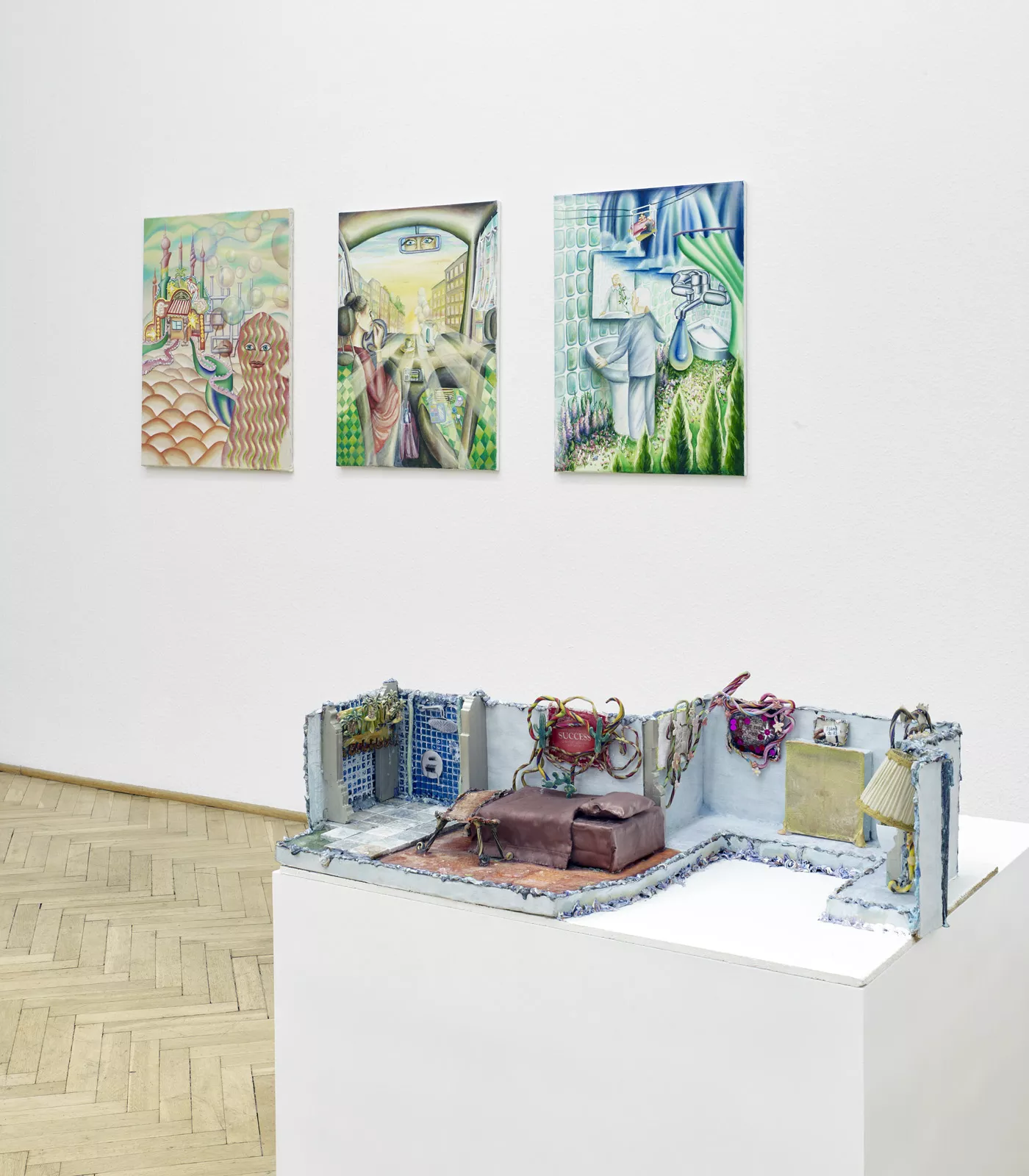Individual ExhibitionImport Export Gallery, Warsaw, 2023

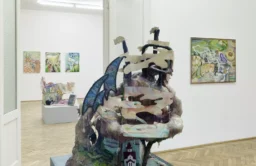

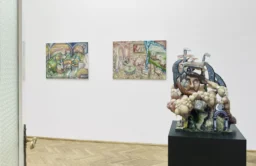
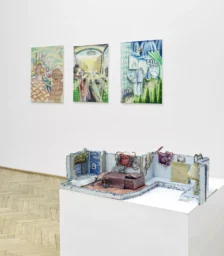
I had a dream that I was standing by the Vistula. Lo and behold, seven beautiful and fat cows came out of the river and began to graze among the rushes. Again, behold, seven other cows came out of the Vistula. They were ugly and skinny and stopped just next to those on the Vistula bank.
According to the Czech economist Tomáš Sedláček, the first economic cycle in human history was the Pharaoh’s dream, recorded in the Book of Genesis. Pharaoh dreamt of seven fat cows coming out of the Nile and being devoured by their skinny successors. In this macroeconomic vision, dreaming becomes a method of forecasting. While modern prediction tools seem less dreamlike, those who write them also keep their eyes closed to dream them. Seemingly objective, verifiable models and forecasts are dreamt up according to ideologies and in the name of scientific methods.
What method does Katarzyna Wyszkowska advocate for with her exhibition “One More Nap” at Import Export? Using pastel hues and mosaic compositions – reminiscent of a daydream and a series of installations shrouded in resin mist, Wyszkowska maps contemporary socio-economic problems. The nine paintings on view in the show, all from the last two years of work, speak of neoliberal phantasms, present realities of the labor market, the mirage of financial pyramids, and other curiosities of the rampant capitalism of the 1990s, which came with the collapse of the People’s Republic of Poland.
The invisible hand
Ideology often sneaks up on us in the form of a linguistic metaphor – here weaved into the economic industry speak. Evocative of a religious work of art, the painting ‘Invisible Hand’ borrows from Adam Smith’s metaphor of self-regulation of the market – further developed by Paul Samuelson among others. Although Smith’s maxim largely informed the economic theory for more than two centuries, its origin is far from a mathematical calculation. For Smith, it was the hand of divine providence. In Wyszkowska’s work, the invisible eventually becomes visible – a hand clad in heavenly lace appears at the top of the canvas dictating the rules of the economic game.
The theological ground of the economic narratives for centuries helped to explain market complexities. It helped to construct a social phantasm of the natural. In “Prześniona rewolucja”, Andrzej Leder describes a social imaginary – it shapes the society and fulfills its desires at once, while taking the form of a phantasm. The impact of the ‘invisible hand of the market’ on self-regulation is debatable. It remains impactful for the social organization. Similarly the ‘natural’ human desire for self-realization – according to Smith, drives the world.
Do what you love
The “natural” is always dubious. In “Playground, “Artistic Genius” and “One more nap”, Wyszkowska ponders the role of employment in the social imagination. Work as a goal in itself, a natural human need, is a fairly new construct. This dogma of work was contextualised and deconstructed by David Frayne in his publication “Refusal of Work”. Following Weber’s thought, he argues that in a pre-capitalist society, people worked only as much as necessary and that the idea of work as a goal in itself has its roots in Protestant ethics. This dogma, however, cannot be challenged easily. While reading Frayn’s book, I felt repeatedly ignited in discord. I kept repeating in my mind that I love to work. Work has become the core of one’s identity. In this occurs the true force of the phantasm – that it is difficult to stop believing in it. To wake up from the dream of work is to lose the meaning of life.
On the playground
In “Playground”, Wyszkowska’s characters seem to have reached the breaking point –the sense of meaninglessness of work cannot even be eased by the company perks. The mosaic composition featured ten ways to kill time at work: from watching Netflix in secret to playing table football. “Playground” is a world built from various work spaces juxtaposed. It is a co-work – or rather co-anti-work. It is a playground for adults. Outside the window, a red sunset announces that soon the seventeenth hour will pass and the performance of work for the day will come to an end. To these ten scenes, I would add one as described by David Graeber in “Bullshit Jobs”. It is a story of a Spanish civil servant, who – tired of bureaucratic boredom – had not shown up for work for six consecutive years. Despite this, he drew a salary, because no one had noticed his absence. When his superiors finally discovered the truth, they brought him to court. In his justification, he said that he had used the time to study the writings of philosopher Baruch Spinoza.
Managers of themselves
“Working from nine to five, what kind of life is that?” – ironically asks Dolly Parton in a song criticizing office boredom from the film “9 to 5”. However, the undoing of the tight corset of regular working hours brought new problems to light. Katarzyna Wyszkowska’s installation “One More Nap” captures the mood of dreamy procrastination that accompanies freelance and remote work. In this psychedelic scene, we see a figure taking a nap. The sleep, however, will not last long, as a huge alarm clock hovers over the sleeper. The figure of the sleeper blends into the surroundings, just like the private the public spheres blend. In a bureaucracy, rules, and boundaries are clearly defined. Discipline comes from managers and bosses. In democracy, on the other hand, the line between work and non-work is blurred. The apparatus of discipline is not set in the external environment – it is within us. As a result, we work almost the entire time. Byung-Chul Han in “Psychopolitics” describes job burnout and depression as the body’s immunologic reaction to self-harm. The inflammation is not caused by an “outsider” but by ourselves. When the mind is a tool of work, we direct our aggression inward. Frustration does not find a venting outlet, and relaxation is lined with stress.
Time to get up
“One more nap” does not bring the desired rest. Whether we want it or not, we dream about tasks that pile up. Maybe this time when we wake up – not so much from a nap, but from the dogmatic sleep of work – we finally can quote the hero of my favorite meme. To the question “What is your dream job?”, he answers: “I simply don’t dream about labour.”
text by Kat Zavada



